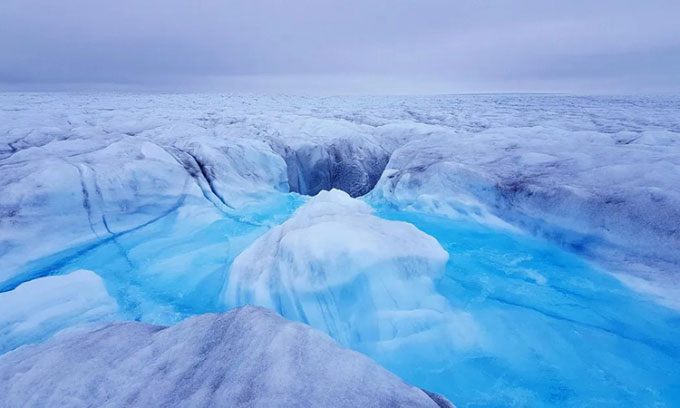The Greenland Ice Sheet is melting at such a rate that the amount of water it generates could produce more energy than the 10 largest hydropower projects in the world combined.

A river formed by melting ice in Greenland. (Photo: Poul Christoffersen)
Every summer, rising temperatures and increased sunlight cause many frozen surfaces in Greenland to melt, forming rushing rivers and waterfalls that flow down the glacier’s base to depths of several kilometers through large cracks and fractures.
“There is a lot of attractive energy stored in the water formed on the surface, and when it falls, that energy has to go somewhere. Unfortunately, this energy is being converted into heat, accelerating the melting at both the top and bottom of the glacier,” said Professor Poul Christoffersen from the University of Cambridge in a recent report published in the Proceedings of the National Academy of Sciences.
This is part of a feedback loop showing how climate change can accelerate global sea level rise, the report emphasizes.
Christoffersen and his colleagues used a type of radar to measure the amount of ice melting and found that up to 82 million cubic meters of water falls from the surface to the base of the Store Glacier in Greenland every day throughout the summer. This volume of water generates more energy than the combined output of the 10 largest hydropower stations in the world.
“The heat generated by the falling water melts the ice from below, and the rate we are reporting is unprecedented. With what we are witnessing regarding climate change at high latitudes, the rate of ice melt could easily double or triple,” Christoffersen added.
Unfortunately, there is currently no way to harness this melting water to produce clean electricity, which could reduce the greenhouse gas emissions that are driving the very process of its creation. The Greenland Ice Sheet is currently the largest contributor to global sea level rise.


















































